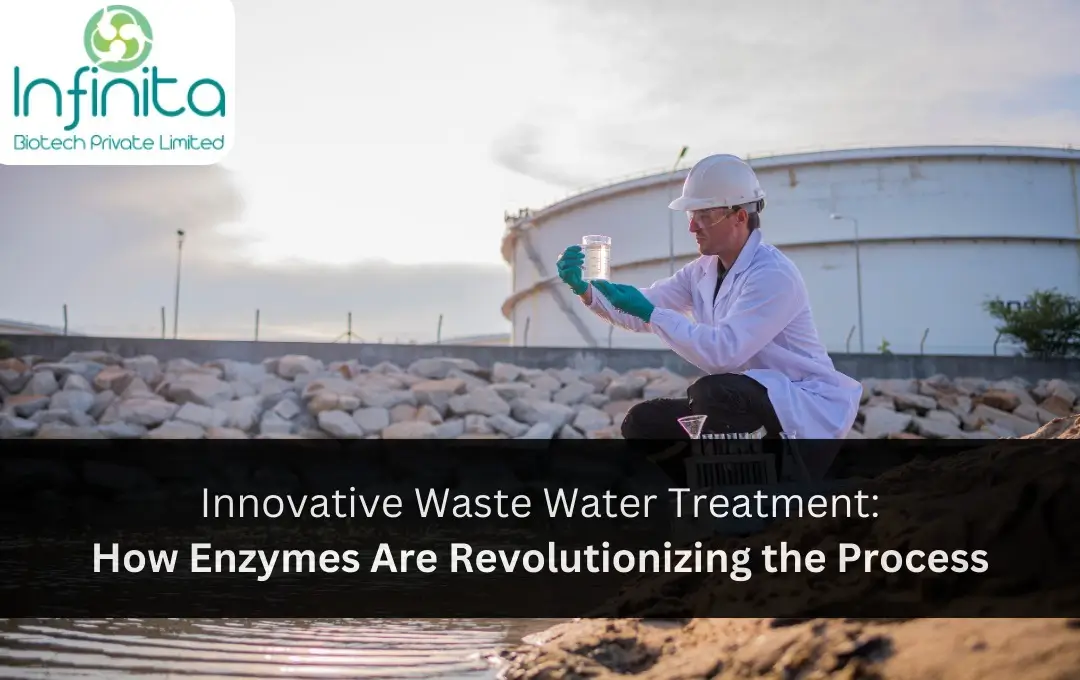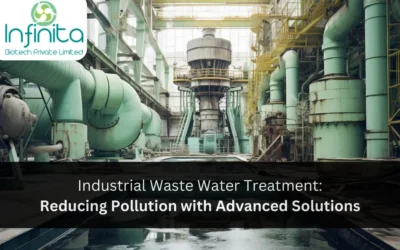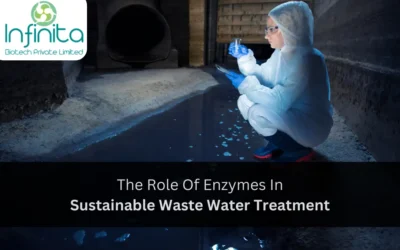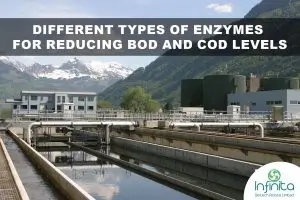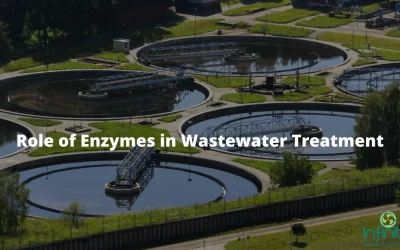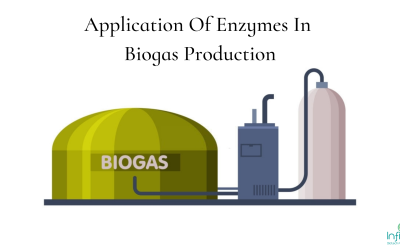Introduction
Water is the lifeblood of our planet, but with rapid industrialization and population growth, clean water is becoming scarce. Waste water treatment is critical, but conventional methods often fail to keep pace with modern environmental demands. Enter enzymes—a game-changing solution. These natural catalysts are revolutionizing the waste water treatment process, offering a sustainable and highly efficient way to cleanse water of pollutants. But how exactly are enzymes transforming this essential process? Let’s dive in.
What Are Enzymes?
A Basic Overview of Enzymes and Their Function
Enzymes are nature’s workhorses. These proteins accelerate chemical reactions without being consumed in the process, making them incredibly efficient. Their role in breaking down complex molecules into simpler compounds makes them perfectly suited for waste water treatment.
How Enzymes Are Naturally Designed for Degradation
In their natural environment, enzymes degrade organic material—be it in the human body or the soil. This ability to decompose and recycle waste is now being harnessed for modern waste water treatment, turning complex pollutants into harmless by-products.
Traditional Waste Water Treatment Methods
Mechanical and Chemical Treatments: The Old Standards
Historically, waste water has been treated using mechanical filters and chemical treatments. Mechanical treatments remove large debris, while chemical treatments break down or neutralize harmful substances. While effective to an extent, these methods have their drawbacks.
Limitations of Conventional Waste Water Treatments
Traditional methods often involve harsh chemicals that can produce toxic by-products. Additionally, mechanical methods may struggle to fully eliminate micro-pollutants like pharmaceuticals and industrial chemicals. Not to mention, these methods can be energy-intensive and costly.
The Role of Biotechnology in Modern Water Treatment
How Biotechnology is Shaping the Future of Water Treatment
Biotechnology is opening new doors in water treatment by leveraging natural processes to enhance purification. One of the most exciting developments is the use of enzymes to clean waste water. By mimicking natural biodegradation, biotechnology allows for cleaner, greener, and more efficient treatment processes.
Enzymes as Biological Catalysts in Water Treatment
Enzymes act as catalysts that speed up reactions, breaking down organic compounds found in waste water. This includes everything from fats and oils to proteins and starches, reducing the need for harsh chemicals and improving the overall efficiency of the treatment process.
How Enzymes Work in Waste Water Treatment
Breaking Down Organic Pollutants
Enzymes target specific types of pollutants and break them down into simpler molecules. For example, proteins are broken into amino acids, while fats are split into glycerol and fatty acids. This degradation process makes the water easier to purify.
Accelerating Biodegradation Processes
One of the key benefits of enzymes is their ability to accelerate biodegradation. While natural microbial activity can take days or even weeks to break down pollutants, enzymes can expedite the process, making waste water treatment faster and more efficient.
Types of Enzymes Used in Waste Water Treatment
Proteases: Breaking Down Proteins
Proteases are enzymes that specialize in breaking down protein molecules. In waste water, proteins from organic matter can clog systems or reduce water quality. Proteases simplify these molecules into peptides and amino acids, easing their removal from water.
Lipases: Tackling Oils and Fats
Lipases work on fats and oils, substances that are notorious for clogging sewage systems and harming aquatic ecosystems. By breaking down these lipids into simpler substances, lipases prevent the buildup of harmful grease and improve the water’s overall quality.
Amylases: Breaking Down Starches
Amylases target starches, which are commonly found in agricultural runoff and food processing waste. These enzymes convert starches into sugars, which can be further broken down by microorganisms in the treatment process, enhancing the overall efficiency.
Advantages of Enzyme-Based Waste Water Treatment
Eco-Friendly Alternative to Chemicals
One of the standout advantages of enzyme-based treatments is their environmental friendliness. Enzymes are biodegradable and non-toxic, meaning they don’t leave harmful residues. Unlike chemical treatments, which can pollute water with toxic by-products, enzymes simply break down organic matter without causing further environmental harm.
Cost Efficiency in Large-Scale Operations
Enzyme-based systems can also be cost-efficient in the long run. While the initial costs of enzyme production might be high, the reduced need for chemicals and the increased speed of treatment can lead to significant savings over time—especially in large-scale operations.
Reducing Toxic By-Products in Treated Water
Traditional chemical treatments can introduce toxic by-products into treated water. In contrast, enzyme-based treatments help eliminate these risks by naturally breaking down pollutants without producing harmful substances.
Applications of Enzyme-Based Treatment in Different Industries
Municipal Water Treatment Plants
Enzymes have proven effective in municipal water treatment plants, where they help break down organic waste from households and businesses. The use of enzymes can help improve efficiency and reduce reliance on chemical additives.
Industrial Effluent Treatment: Food and Beverage, Textiles
Industries such as food and beverage production and textiles produce high levels of organic waste. Enzymes can be used to break down fats, proteins, and starches in these effluents, significantly improving the quality of water released back into the environment.
Agricultural Runoff Management
Agricultural runoff contains high levels of organic matter, fertilizers, and pesticides, which can be challenging to treat. Enzyme-based treatments help degrade organic pollutants, making the runoff safer for rivers, lakes, and groundwater supplies.
The Environmental Impact of Enzyme-Based Treatments
Reducing Chemical Pollution in Natural Waterways
By using enzymes, water treatment facilities can drastically reduce the amount of chemical pollutants entering natural waterways. This helps protect aquatic life and ensures that ecosystems remain balanced.
The Role of Enzymes in Supporting Aquatic Ecosystems
Since enzymes break down pollutants into harmless substances, they help maintain water quality that supports fish and plant life. By reducing the chemical load in rivers and oceans, enzymes contribute to healthier, more vibrant aquatic ecosystems.
Comparing Enzyme-Based Treatment to Other Biotechnologies
Enzymes vs. Microbes in Water Treatment
Both enzymes and microbes are used in waste water treatment, but they operate differently. Microbes break down waste over time by consuming organic material, whereas enzymes directly catalyze the breakdown of compounds. Enzymes offer faster results and can target specific pollutants more effectively than microbes, making them ideal for high-efficiency treatment needs.
Why Enzymes May Be the Superior Option in Certain Scenarios
In environments where rapid waste degradation is required, enzymes outperform microbial treatments. Enzyme-based treatments are also less sensitive to environmental changes than microbial treatments, which require specific conditions to function optimally. Enzymes, therefore, offer greater flexibility and reliability in fluctuating conditions.
Future Innovations in Enzyme-Based Water Treatment
Genetic Engineering for More Resilient Enzymes
One exciting development is the genetic engineering of enzymes to make them more resilient. These enhanced enzymes can tolerate a wider range of environmental conditions, making them more effective in real-world applications.
Nanotechnology Integration in Enzyme-Based Treatments
Nanotechnology holds promise for improving enzyme stability and performance. By combining enzymes with nanomaterials, researchers are developing systems that enhance enzyme activity, potentially leading to more efficient and scalable waste water treatment solutions.
Conclusion
The future of waste water treatment is being shaped by enzymes, these natural catalysts that offer a more sustainable and efficient way to purify our water. By harnessing the power of enzymes, industries and municipalities can reduce their reliance on harmful chemicals, cut costs, and protect the environment. As biotechnology continues to evolve, enzyme-based waste water treatment will likely become the standard, leading us towards a cleaner, more sustainable future.
